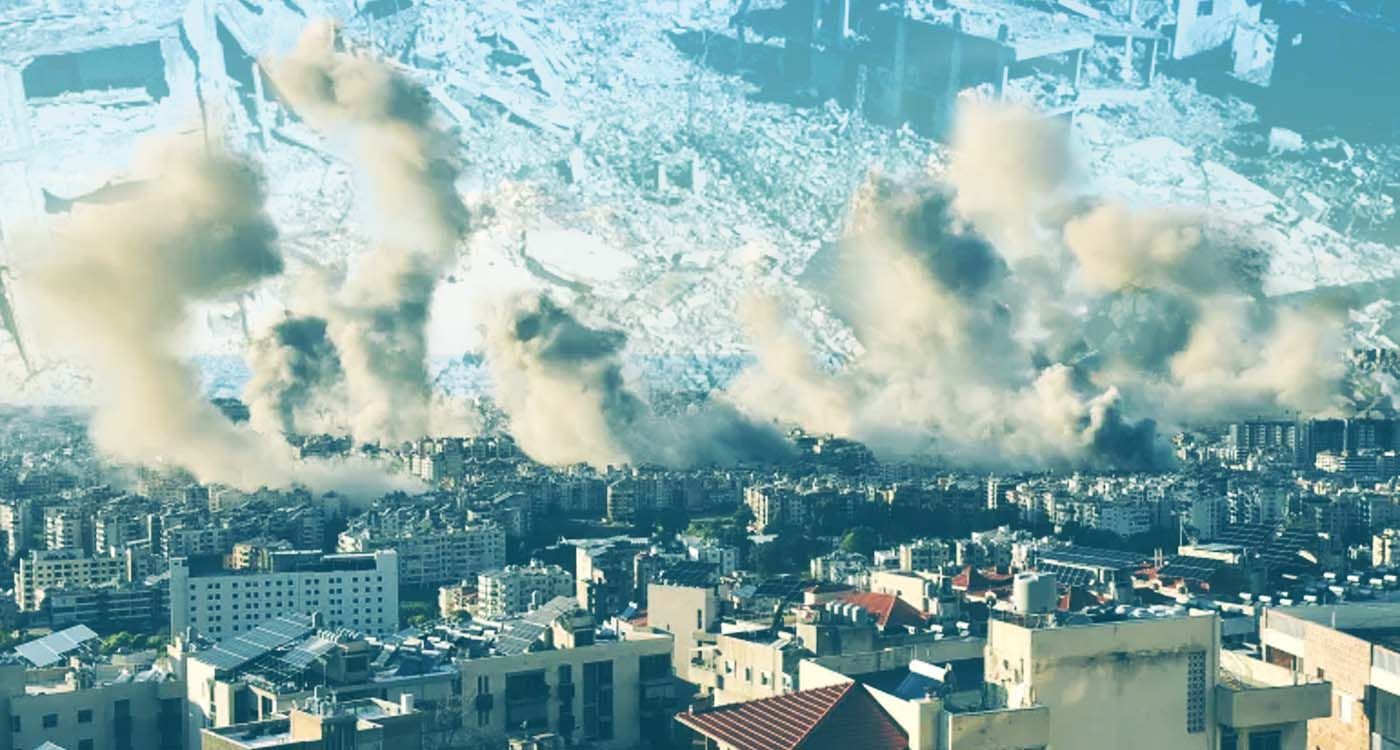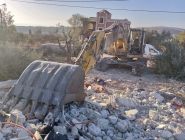
One year after the September 2024 war, southern Lebanon bears deep scars. Ravaged by strikes and displacement, the region faces a dual crisis: a collapsing economy and the quiet unraveling of its social fabric. Behind shattered facades and shuttered markets, an entire way of life teeters on the brink of a merciless winter.
Agonizing Markets
In the towns of Marjayoun, Hasbaya, and Nabatiyeh, once-bustling shopping streets have fallen silent. Small businesses, the backbone of the local economy, teeter on the edge of collapse. Supplies are exhausted, deliveries have stopped, and customers crushed by inflation buy only what they must.
“The war took everything from me. My stock burned, my suppliers will not deliver, and the few customers who come ask for prices I cannot lower,” says Abu Ramy, a hardware store owner in Marjayoun, standing amid his empty shelves.
In Nabatiyeh, nearly 60% of shops have shut down or operate at a fraction of their former capacity. “Before the war, I had customers from Bint Jbeil, even expatriates. Today, my sales are down more than 70%,” says Ghassan, owner of a shoe store.
Weekly markets, once vibrant hubs, now resemble ghost streets. At Souk el-Khan in Hasbaya district, only a handful of stalls remain. Fear of sporadic strikes keeps families at home, deepening the paralysis of an already strained economy.
The Trap of Daily Poverty
Incomes have collapsed, often barely reaching $15 to $20 a day. “With what I earn, I cannot even buy the essentials for my children. And for winter, I do not know how to keep them warm,” says Ali, displaced from Kfar Kila.
Food prices have tripled since the start of the war. “A bag of rice or sugar now costs three times what it did before. How are we supposed to manage?” sighs Zeinab, a mother of four living as a refugee in Marjayoun.
Caught in this relentless downward spiral, many take on multiple small jobs just to survive. The South’s economy is no longer a source of opportunity; it is a daily struggle for survival.
Economic Recovery Stalled: Between Promises and Partisan Control
The slow pace of reconstruction reflects more than the scale of the destruction. Aid and rebuilding projects are tightly controlled by Hezbollah, blocking any genuine economic recovery.
Lebanon’s reconstruction needs are estimated at $11 billion by the World Bank. Yet the state, paralyzed by crisis, has failed to deliver: revenues remain low, aid frozen, and infrastructure left to decay.
In this institutional vacuum, Hezbollah has set up its own reconstruction network through Jihad al-Bina, its so-called “civil” branch. Officially, it fills the state’s gaps. In reality, it strengthens its hold on the South: aid is distributed based on loyalty, political priorities dominate, and “disloyal” areas are sidelined.
“If you are not in the right network, you receive nothing,” says Fouad, a carpenter from Khiam, now without a workshop. Other residents describe aid as opaque, conditional, and entirely dependent on the approval of Hezbollah’s local officials.
Even within its own stronghold, Hezbollah struggles to meet the scale of the disaster: payments are delayed, amounts are symbolic, and there is no comprehensive economic plan. Reconstruction has not just slowed; it has been weaponized.
Social Fabric in Tatters
The deepest wound is invisible: the breaking of social bonds. Massive rural exodus has emptied villages, scattering families across Saida, Beirut, and abroad. Marriages, harvests, and funerals - traditions that once held village life together – are slowly vanishing.
“It feels as if our identity has dissolved,” says Abu Fadi, a teacher in Taybeh. “When I returned to see our destroyed home, I realized it was no longer possible to live there,” recalls Nour, a mother of two.
Villages are aging, schools are emptying, and young people are fleeing to cities or abroad. Agricultural lands lie fallow and crops are abandoned. “Before, everyone helped with the olive and tobacco harvests. Now, each person struggles alone, isolated,” remembers Melhem, displaced from Hula.
No Future in Sight
For the younger generation, the South offers little hope. Samer, from Ebel El-Saqi, has just secured a visa for Canada. “The South is beautiful, it is our land, but there are no professional prospects. I am leaving not by choice, but out of necessity,” he says.
This exodus accelerates a quiet transformation: the erasure of collective memory and a centuries-old way of life. Over time, some border villages risk becoming ghost towns where nostalgia for the past mixes with bitter resignation.
A South Suspended Between Survival and Oblivion
One year after the war, southern Lebanon exists in a fragile limbo, caught between the fear of renewed hostilities and the daily struggle against poverty. Empty villages, shuttered businesses, and uprooted families reveal a society teetering on the edge.
Fragile yet resilient, the South endures. Its people cling to nostalgia and the hope of returning home. But one haunting question remains: how much longer can they hold on?




Comments